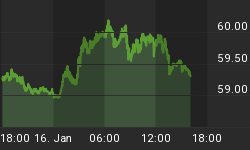Lee Thomas Smith, National Association of Building Owners and Contractors annual convention, 1926
"So intense was real estate speculation in 1925, one-eighth of the national economy was devoted to building in 1925. [This was also true of the property mania in 1890. - FJS] "Buildings were being put up through the endeavors of bond houses to sell bonds, whether the buildings were needed or not. During 1925, $675,000,000 of real estate bonds were sold in this country... an increase of more than 1,000 per cent in the last five years."
A celebrity economist who anticipated CNBC, 1927:
"Now you can't have any exhaustion of credit in this country under the Federal Reserve Act; you have got 100% reserve at all times... Under the Federal Reserve Act the United States has an absolutely unlimited supply of credit, smashing all the cycle theories. The United States is in a new era and only a student of the Federal Reserve System, the greatest the world has ever seen, will understand." [My italics - FJS]
Professor Joseph Lawrence, star economics professor at Princeton University, 1929:
"The consensus of millions of people whose judgments decide the price levels in the stock market tells us that these stocks are not overvalued....Who then are these men with such a universal wisdom that it gives them the right to veto the judgment of this intelligent multitude?"
Financial World, April 29, 1929:
"It may be well again to stress the all-important point that the Federal Reserve has in its power to change interest rates downward at any time it sees fit to do so and thus to stimulate business."
Miller Huggins, New York Yankees manager, May 14, 1929
"I don't think the Yanks are going to catch the Athletics.... They've been getting fairly high salaries and they've taken a lot of money out of baseball, a whole lot of money. They have stock market investments and these investments are giving them excellent returns at the moment. When they pick up a newspaper now, they turn to the financial page first and the sports page later. These things aren't good for a club...."
FJS: It has been estimated that corporations (including U.S. Steel, General Motors, AT&T, and Standard Oil of New Jersey) had lent $5 billion to New York Stock Exchange purchases by September 1929. They were drawn to the call loan market as rates rose to 10%. In consequence, total securities loans rose from $12.4 billion on October 3, 1928 to $16.9 billion a year later. To appreciate the magnitude in relation to the economy, the gross domestic product in 1929 was $104 billion. Even though only 2.5 million Americans owned shares, a disproportionate concentration of funds had been directed at the stock market.
New York Times, September 6, 1929: "Fisher Denies Crash is Due":
"The present high level of stock prices are...largely brought about through ...investment diversification made possible to the investor by investment trusts." [Economists seem never to learn that what they call diversification is usually a concentration of leveraged speculation. - FJS"]
New York Times, September 6, 1929: "Brokerage Office Set Up On Pebble Beach Golf Course":
"Golf enthusiasts who are following the course of the national amateur championship at Pebble Beach, Cal., may watch the stock market while keeping up with the play. A temporary brokerage office, housed in a tent...has been established by the firm of E.F. Hutton & Co.... The temporary office has had a lively bit of business from the crowd following the players and from some of the players, too, many of whom are ardent followers of market quotations."
New York Times, September 9, 1929 (probably written by Alexander Dana Noyes):
"There were numerous "considerations now which must nowadays modify ideas about the future. One is the power and protective resources of the Federal Reserve."
Flappers

New Yorker, October 12, 1929:
"[M]any contractors of estimable standing are ready to take over the "secondary financing" of not-too-large operations, meaning they will put up most of the cash necessary to complete the building, over and above what the first mortgage provides. They do this in order to keep their operation from falling apart. This loan for the building, which is really a second mortgage, is discounted at some 'big, friendly bank', so that the contractor's money is not tied up after all..."
Business Week, October 19, 1929:
"There is...reassurance that, in the fact that, should business show any further signs of fatigue, the banking system is in a good position now to administer any needed tonic from its excellent Reserve system."
Lewis Mumford, 1930
"Among the many blessings of the Depression, one must count the diminution of such opportunities." [Skyscrapers. FJS]
The New Republic, 1932
"[W]inter evenings were cruelly revealing, for when the sun set before the close of daily business it was all too apparent how many of these towers stood 'black and untenanted against the stars...With some few exceptions, the newest New York may be described as a sixty-story city unoccupied above the twentieth floor."
New York Times, August 21, 1934 "The Future of the Skyscraper":
"Even before the great crash and great depression the skyscraper was under suspicion from the standpoint of sound economics."
Cole Porter (1934) "Anything Goes":
If driving fast cars you like,
If low bars you like,
If old hymns you like,
If bare limbs you like,
If Mae West you like,
Or me undressed you like,
Why, nobody will oppose!
When ev'ry night,
The set that's smart,
Is intruding in nudist parties in studios, Anything goes!
Porter was writing about a different decade.
















